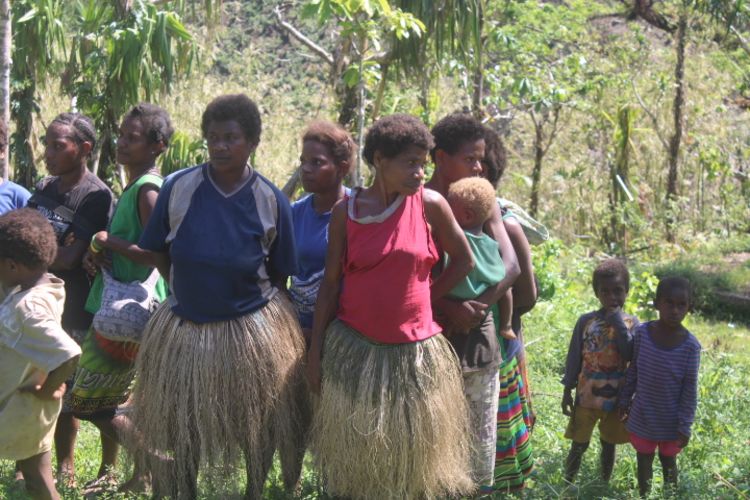Alert 417
Cyclone Harold in Vanuatu
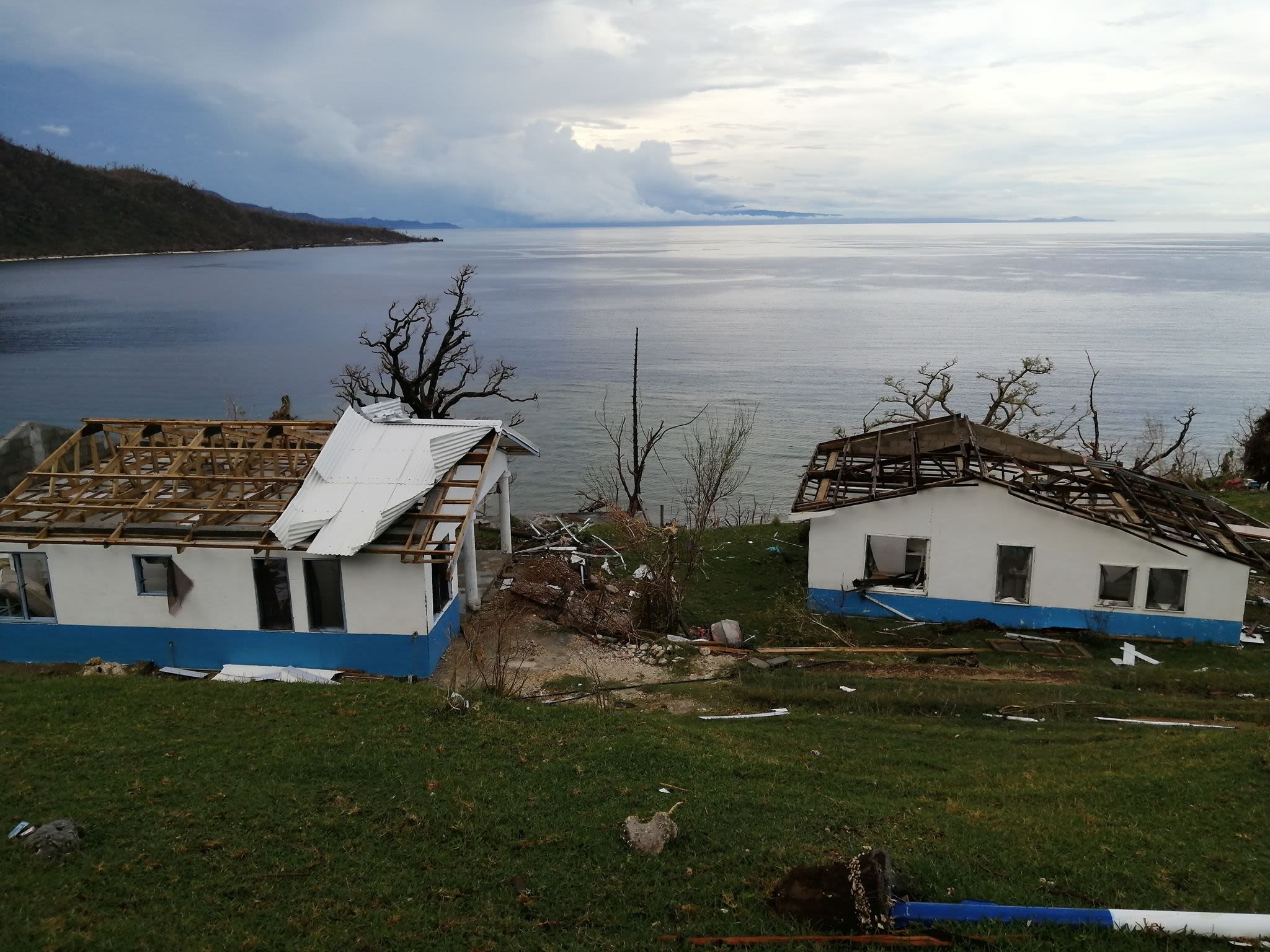
CONTEXT
Vanuatu is regularly ranked as the world’s most vulnerable country to disaster, located on the “ring of fire” earthquake zone and the Pacific cyclone belt. Every year, Vanuatu faces the threat of cyclones. Many of these cyclones are damaging, but sometimes they are devastating. It took Vanuatu years to recover from 2015’s Tropical Cyclone Pam, which caused destruction worth 64% of its GDP. Tropical Cyclone Harold, which slammed into Vanuatu’s northern provinces on 6 April 2020, proved to be almost as devastating. Hitting in the middle of a national state of emergency to prevent an outbreak of COVID-19, the response was even more challenging.
CRISIS
Cyclone Harold made landfall as a category 5 storm with winds of more than 200km/hour and tore through Sanma, Malampa and Penama provinces. Some 123,000 people, most living in traditional housing in dispersed, rural communities and reliant on subsistence farming for their livelihoods, have been severely impacted by the cyclone. Food crops, water systems, homes, health centres and schools across the three provinces have been damaged or destroyed.
The affected areas have challenging logistics, limited services and infrastructure, making the emergency response complex. COVID-19 restrictions are also in place and the country is in a state of political transition following the March election, adding further challenges. International borders are closed and the response is being managed with existing resources within the country. COVID-19 prevention measures need to be integrated into all humanitarian processes.
With support from the Start Fund, CARE Vanuatu, World Vision and Save the Children worked with local partners on the ground to implement the response.
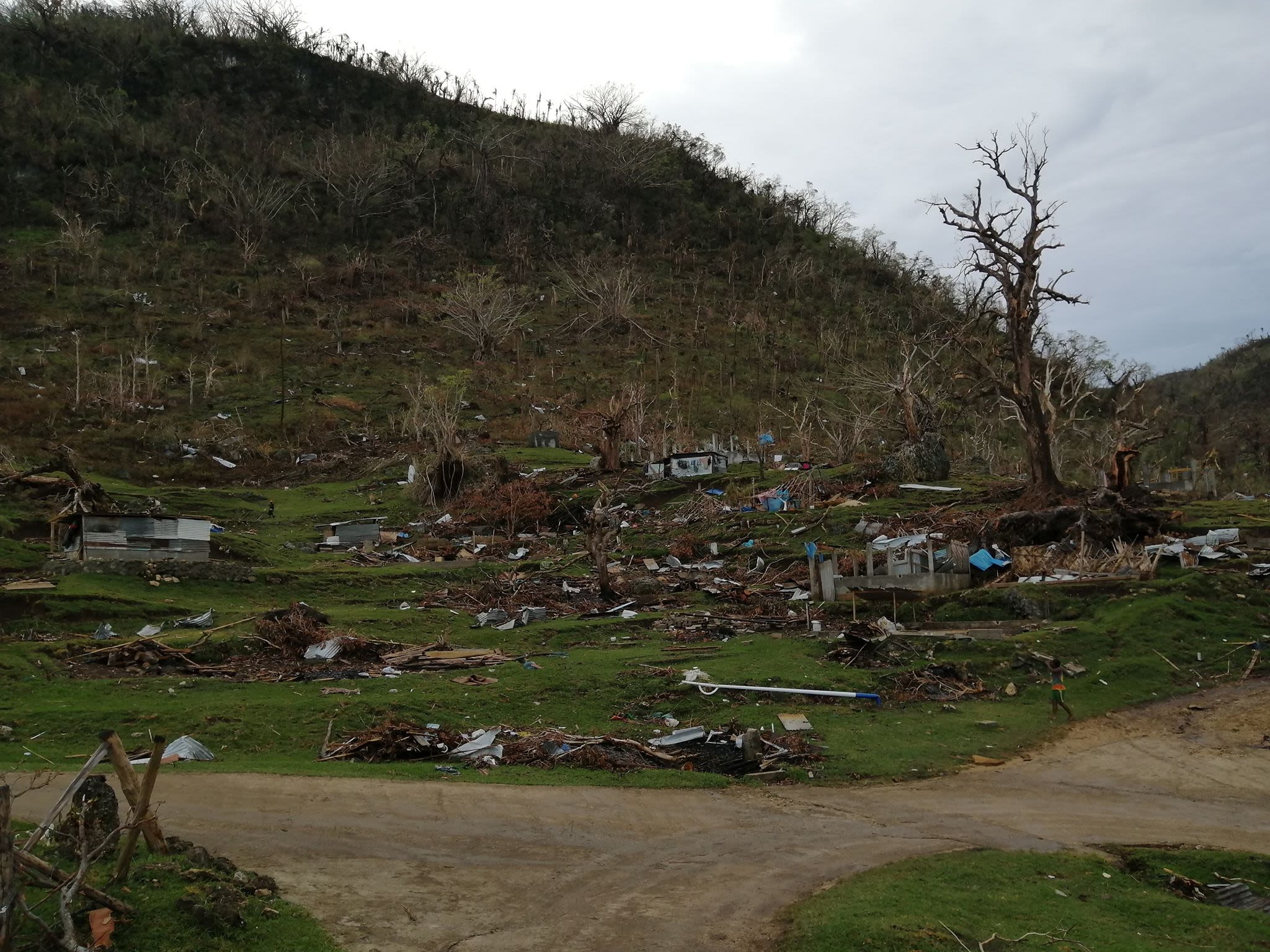
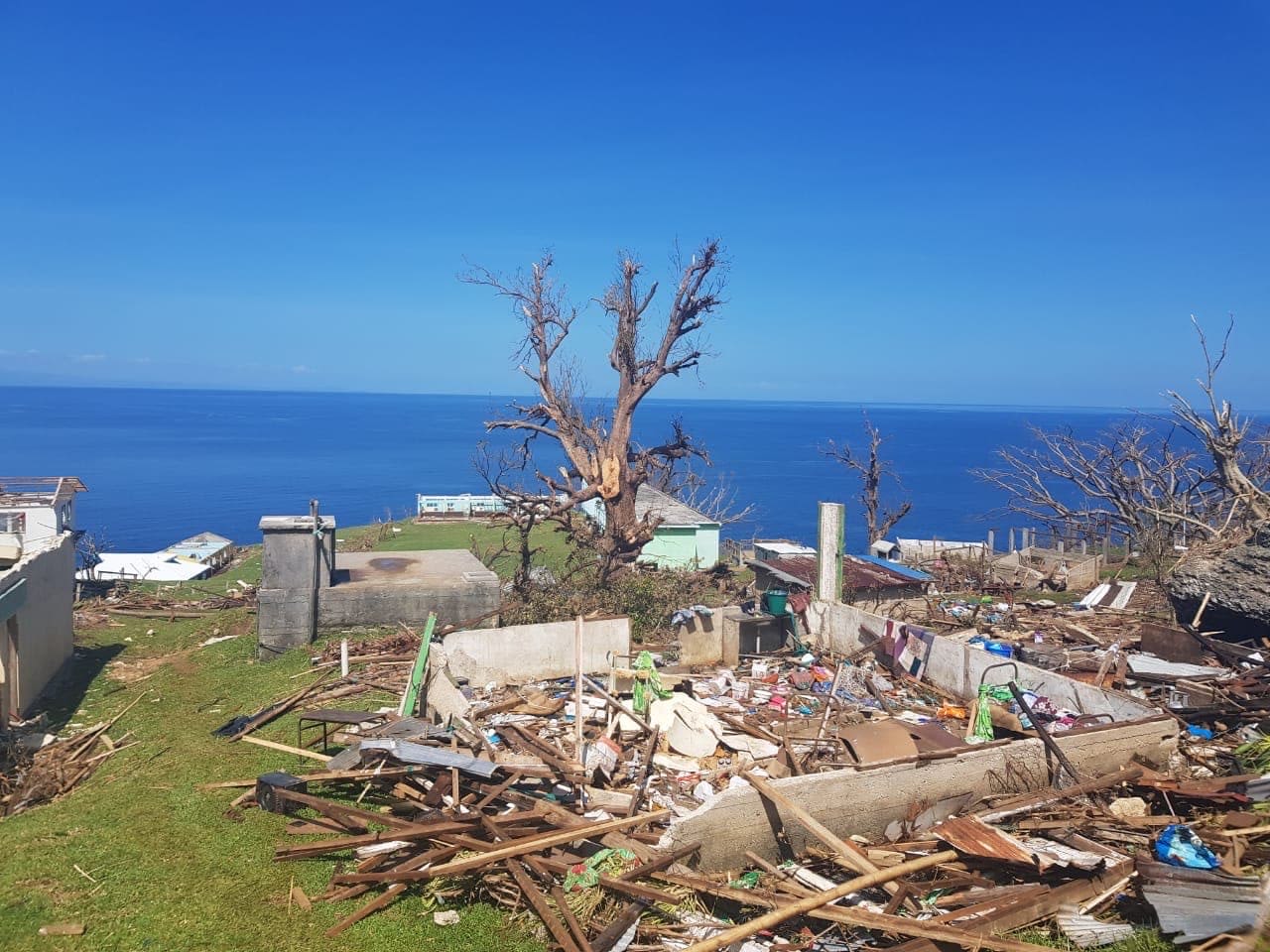
RESPONSE
CARE Vanuatu led response activities focused on isolated communities in South Pentecost Island, and provided support to other humanitarian responders in Central/North Pentecost and North Ambrym. They worked with the Vanuatu Society for People with a Disability (VSPD), Vanuatu Red Cross Society (VRCS) and Vanuatu Christian Council (VCC) to coordinate with and utilise these organisations’ community networks and leverage their expertise. With support from the Start Fund and other donors, such as the European Union and the Australian Government, relief supplies including shelter kits, community tool kits, hygiene and dignity kits, and kitchen kits have been distributed to a total of 6,641 people in Pentecost and 1,919 people in Ambrym.
Some of these remote communities could only be accessed by helicopter and supplies were airlifted to six communities, delivered by a team of women and men who consulted with community leaders on the distribution. They also provided women and people with disabilities with targeted supplies and information.
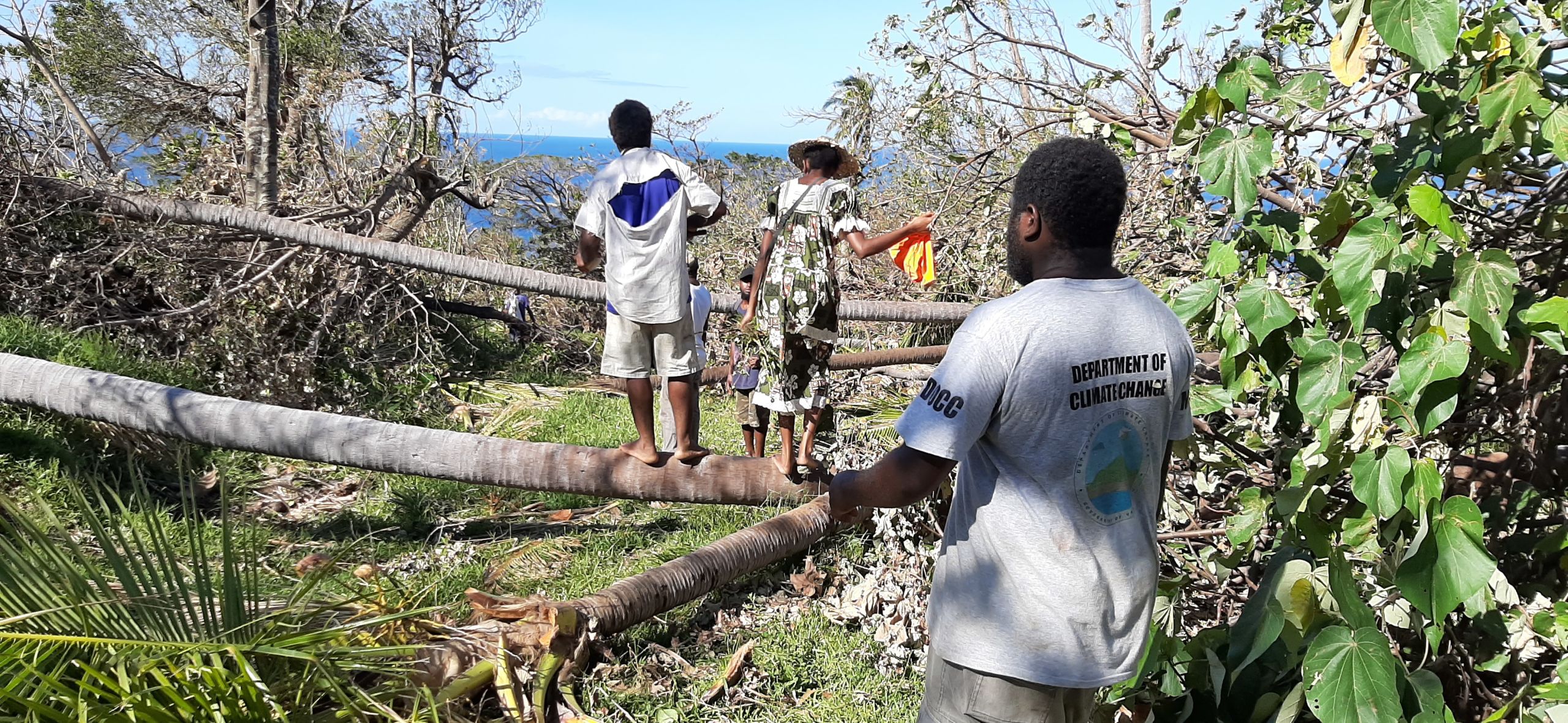
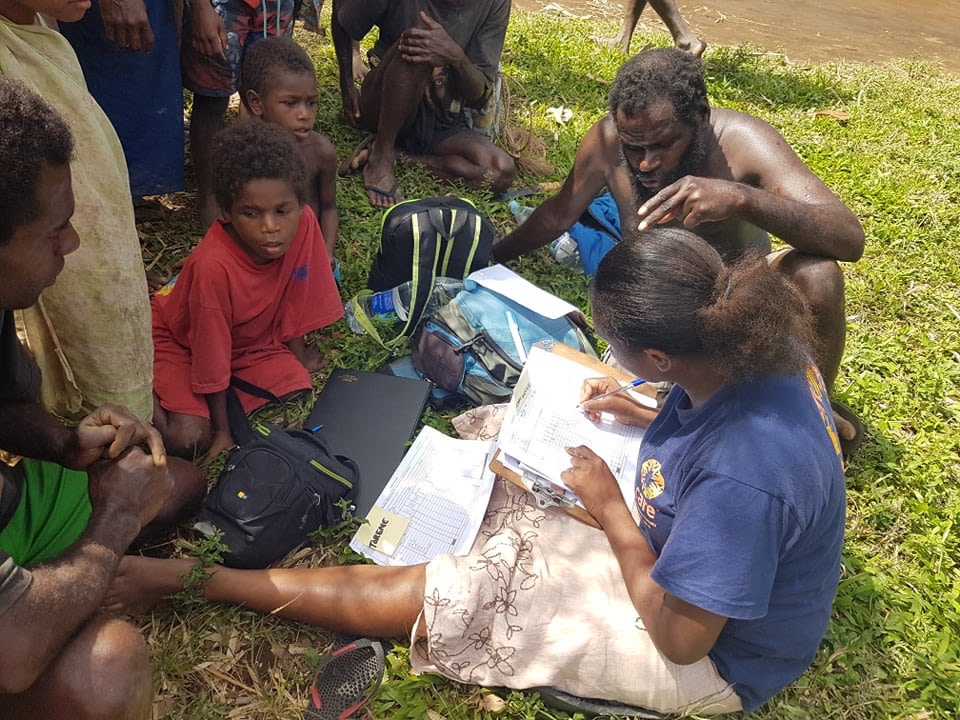
“You cannot easily access the roads with relief supplies to distribute after the cyclone and we had to use our hands to hold on to things and climb across the trees blocking the way.”
-Julia Marango, CARE Vanuatu project manager
LEARNING
The value of partnerships
Partnering with local organisations with deep roots in these remote communities, combined with CARE’s emergency operations capacity, enabled CARE and partners like VCC and VRCS to mobilise a rapid emergency response to the most impacted but hardest to reach areas. This enabled a comprehensive package of relief to be delivered to communities that would otherwise have been underserved had the partners not been working hand in hand.
Community connection matters
By leveraging partner organisations’ credibility and established community networks in the affected areas, the distribution approach of prioritising highly vulnerable community members could be discussed and agreed with community leaders to build community support.
Strategies for inclusion
To ensure inclusive distribution of aid and information in highly traditional, male dominated communities, a gender-balanced team of staff delivered the goods and engaged with community leaders to plan distributions, but also created opportunities for women and girls to join in breakaway groups to receive additional information on the relief goods and direct access to female-targeted kits.
Flexibility is key
Supply chain challenges exacerbated by national COVID-19 restrictions required an adaptable, flexible approach involving combining funding and supply sources, collaborating with other responders with complementary materials, and harnessing alternative logistics channels. For example, CARE worked together with the Vanuatu Red Cross Society, Vanuatu Business Resilience Council and UNFPA to source supplies and was able to use both commercial shipping and Australian Defence Force flights to import materials that were unavailable in country.
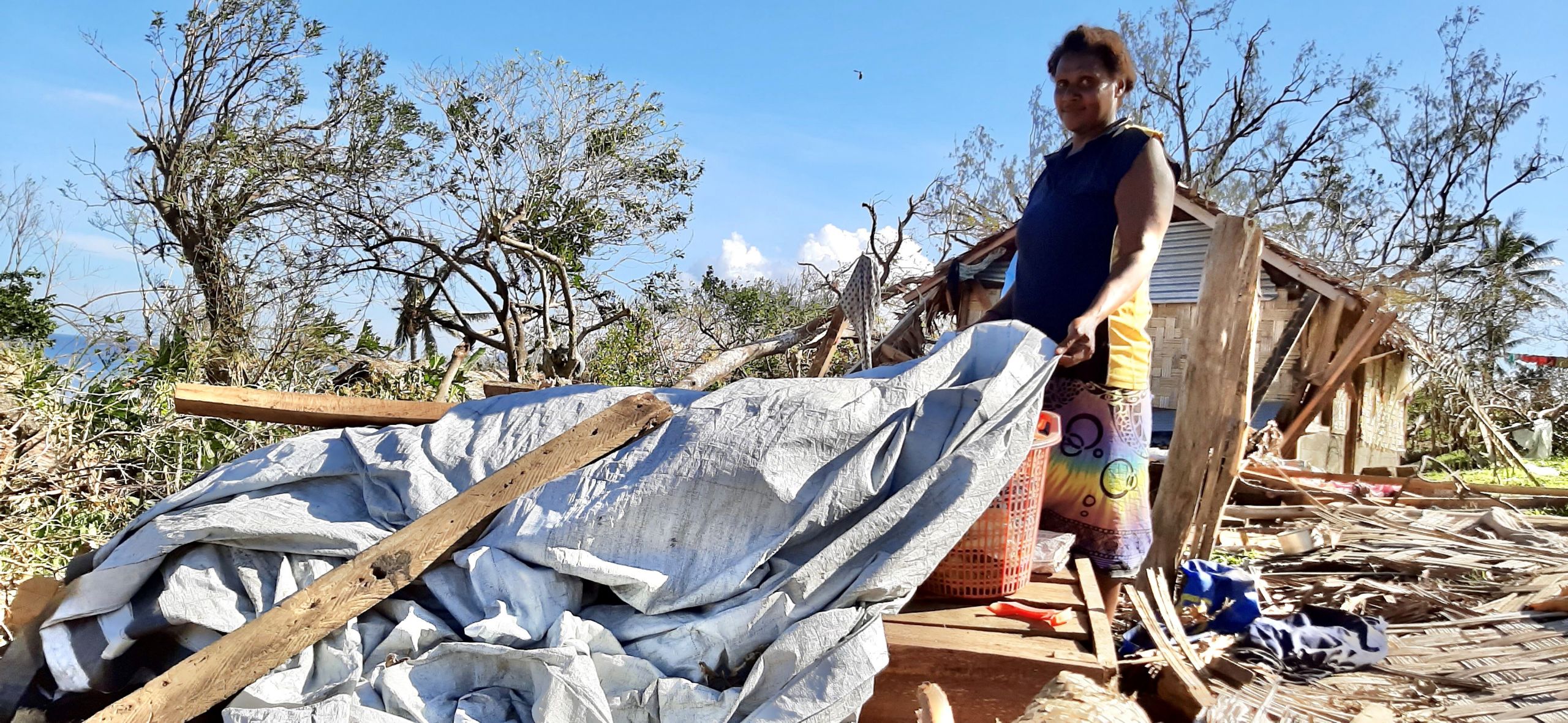
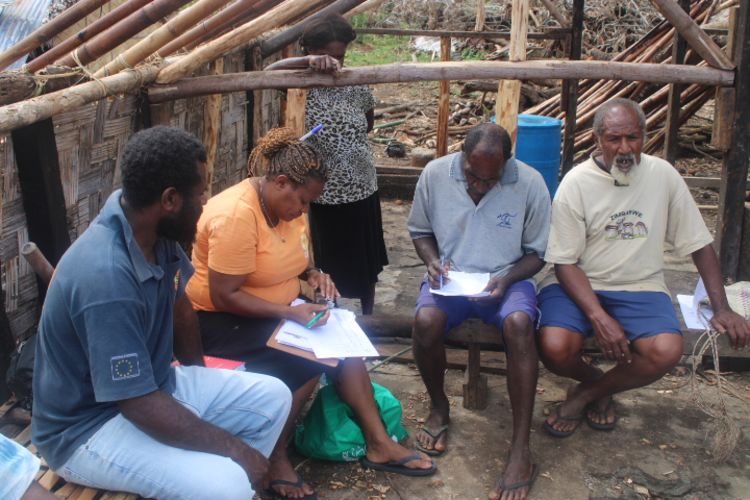
“We are so happy to have solar lamps! We have been living in total darkness and now we have lamps to use.” - Female community member from Bunlap, East Pentecost
